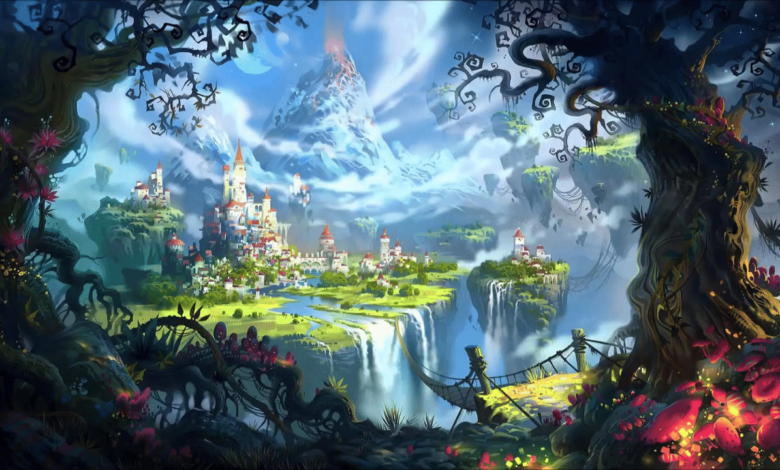The Disowned Child: Chronicles of Unleashed Divine Bloodlust

The tale of “The Disowned Child: Chronicles of Unleashed Divine Bloodlust” is a gripping narrative that intertwines themes of rejection, divine power, and the quest for vengeance. This compelling story not only captures the imagination but also delves into the complexities of human emotions and the consequences of divine intervention. In this piece, we’ll examine the complex layers of this story, examining its characters, themes, and the overarching narrative that makes it a fascinating read.
A Tale of Rejection and Resilience
At the heart of “The Disowned Child: Chronicles of Unleashed Divine Bloodlust” lies the story of a young protagonist who is cast aside by those meant to love and protect them. This disownment sets the stage for a journey marked by pain, resilience, and an unquenchable thirst for retribution. The protagonist, often referred to as the Disowned Child, is a character whose initial vulnerability transforms into a source of immense power.
The Protagonist’s Early Life
The Disowned Child’s early life is characterized by neglect and abandonment. Born into a world where they are neither wanted nor cherished, the child grows up in the shadows of society, struggling to find a sense of belonging. This formative period is crucial, as it shapes the protagonist’s personality and future actions.
The Awakening of Divine Power
The turning point in the narrative occurs when the Disowned Child discovers a latent divine power within themselves. This power, often depicted as both a blessing and a curse, becomes the driving force behind the protagonist’s quest for vengeance. The awakening of this divine bloodlust signifies a transformation from a powerless child to a formidable force capable of altering the course of destiny.
The Nature of Divine Bloodlust
Divine bloodlust, as portrayed in the story, is a manifestation of the protagonist’s inner turmoil and unfulfilled desires. It is a powerful, almost uncontrollable force that demands justice and retribution. The divine aspect of this power suggests that it is not merely a product of the protagonist’s emotions but also a cosmic response to the injustices they have endured.
Themes of Vengeance and Justice
One of the central themes of “The Disowned Child: Chronicles of Unleashed Divine Bloodlust” is the concept of vengeance. The protagonist’s journey is driven by a need to right the wrongs they have suffered. However, this quest for vengeance is portrayed as a complex path. Instead, it is fraught with moral dilemmas and unforeseen consequences.
The Moral Ambiguity of Vengeance
The story delves deep into the moral ambiguity of vengeance. While the Disowned Child’s desire for retribution is understandable, the narrative does not shy away from exploring the darker side of this quest. The protagonist’s actions, fueled by divine bloodlust, often lead to collateral damage and unintended harm. This intricacy gives the character more nuance and challenges readers to question the true nature of justice.
Supporting Characters and Their Roles
In addition to the protagonist, the story includes a group of ancillary individuals who are crucial to the story as it develops the narrative. These characters, each with their motivations and backgrounds, contribute to the richness of the story.
The Mentor Figure
A critical supporting character is the Mentor, a wise and experienced individual who helps the Disowned Child harness and control their divine power. The Mentor’s guidance is crucial in the protagonist’s development, offering both practical training and philosophical insights.
The Antagonist
The story’s antagonist, often a figure of great power and authority, represents the forces that have wronged the protagonist. This character is not merely a one-dimensional villain but is portrayed with depth and complexity, making the conflict between them and the Disowned Child all the more compelling.
The Journey of Self-Discovery
Beyond the themes of vengeance and divine power, “The Disowned Child: Chronicles of Unleashed Divine Bloodlust” is also a story of self-discovery. As the protagonist navigates their quest for retribution, they also embark on an inner journey to understand their true self and their place in the world.
The Internal Struggle
The Disowned Child’s internal struggle is a central aspect of the narrative. Balancing the divine bloodlust with their humanity, the protagonist must grapple with their own identity and the moral implications of their actions. This inner conflict adds a layer of psychological depth to the story.
Symbolism and Imagery
The narrative is rich with symbolism and imagery, which enhance its thematic resonance. The use of blood as a symbol, for instance, represents both life and destruction, mirroring the dual nature of the protagonist’s power. Similarly, the recurring motif of shadows highlights the protagonist’s journey from obscurity to prominence.
Conclusion: A Tale of Epic Proportions
“The Disowned Child: Chronicles of Unleashed Divine Bloodlust” is more than just a story of revenge; it is a complex exploration of human emotions, divine intervention, and the quest for justice. The protagonist’s journey, marked by pain, power, and self-discovery, resonates with readers on multiple levels. By delving into the intricate layers of this narrative, we uncover a tale that is as thought-provoking as it is thrilling.
You May Also Read: Unveiling the Secrets of Arcane Sniper Chapter 126: A Comprehensive Analysis




